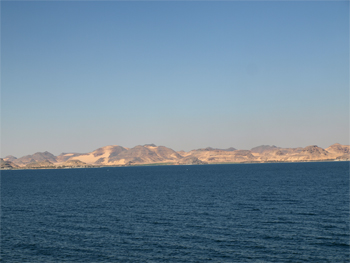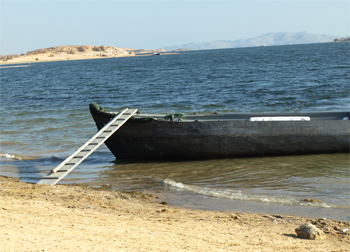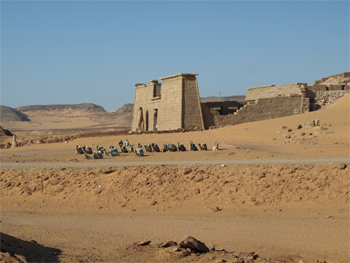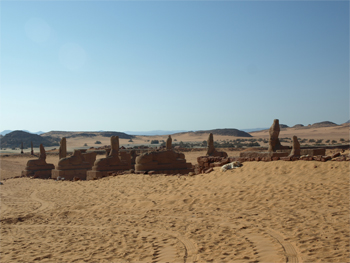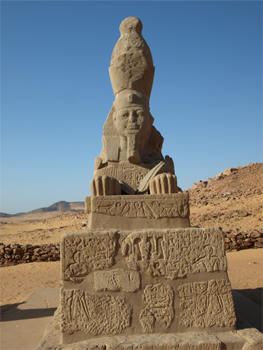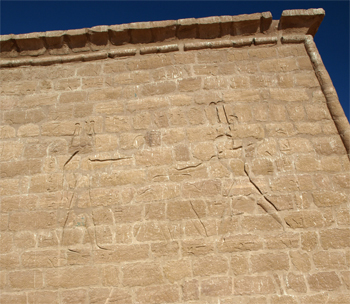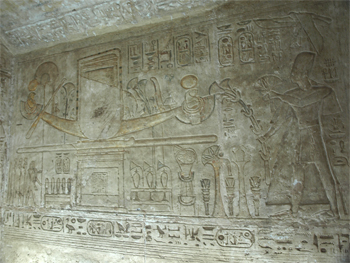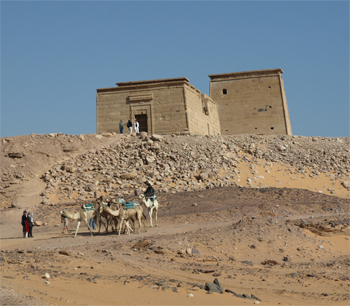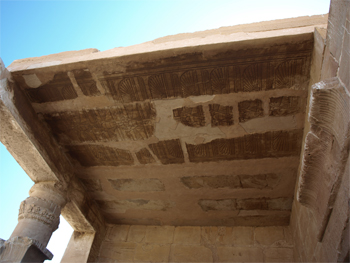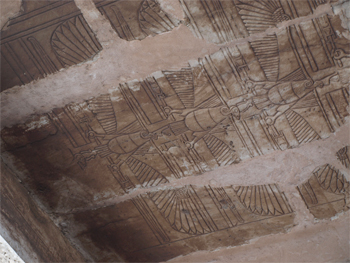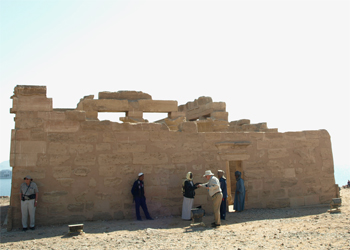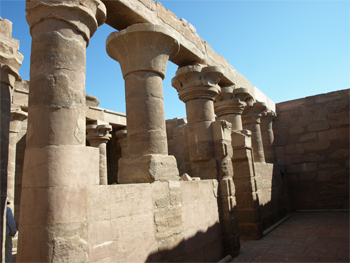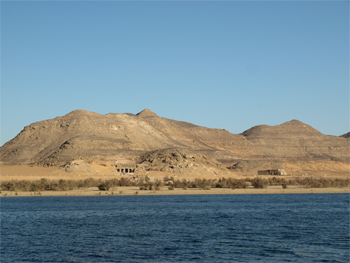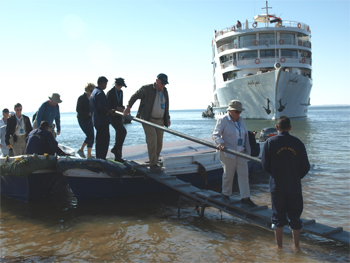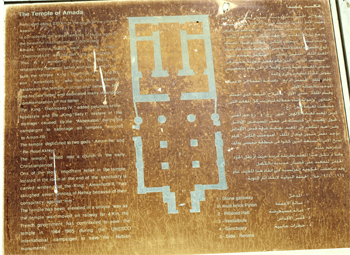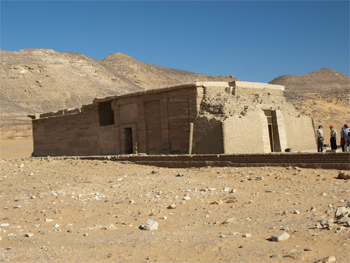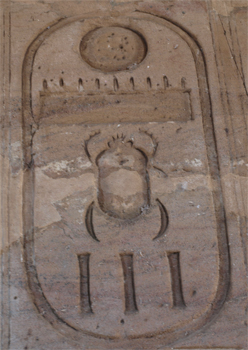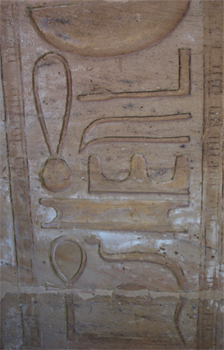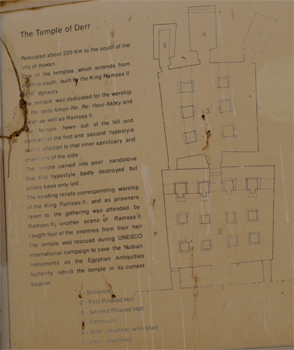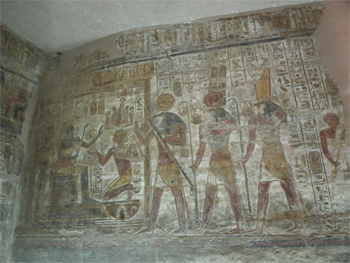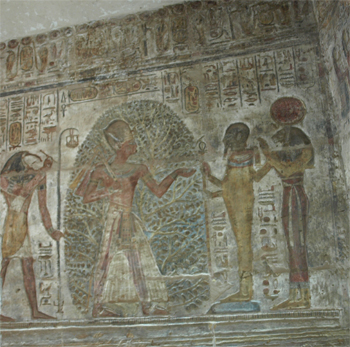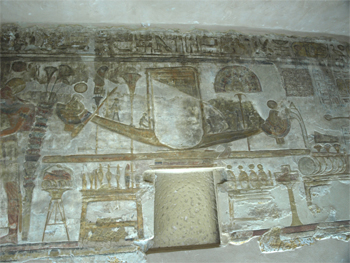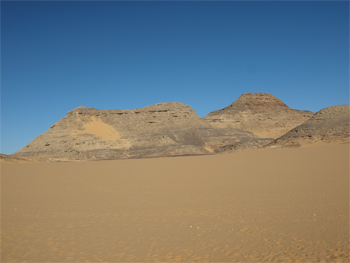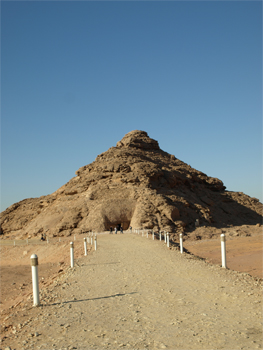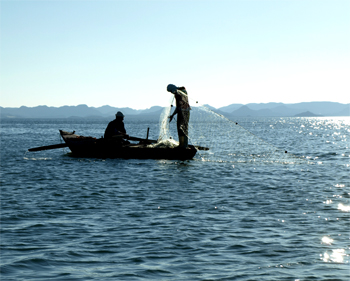Wed., 1/26/11 - On Lake Nasser - Wadi Es- Seboua
This morning we anchored on an island and tendered in to Wadi Es-Seboua (meaning Valley of the Lions or Lionesses) in Old Nubia. It has a row of sphinxes leading to a temple built by the Nubians to honor Ramses II. On the outer facade is the familiar depiction of Ramses II smiting his enemies in front of the god, Amun Ra. We entered the hypostyle hall and then the offering chamber and then the inner sanctum. We are beginning to identify the features of the gods and offerings in the offering chamber - the king, incense, perfume, the falcon head of Horus, and the ram head of Amun Ra. This temple was moved and reconstructed ten miles from its original site by Yugoslavian and Egyptian workers.
Desert surrounding Lake Nasser
|
Tender and gangplank |
Temple of Wadi Es- Seboua
|
Row of sphinxes |
Sphinx with head of Ramses II
|
Temple of Wadi Es- Seboua - Ramses II smiting his enemies before the god Amun Ra |
Temple of Wadi Es- Seboua |
Temple of Wadi Es- Seboua - Solar Boat
|
Temple of Wadi Es- Seboua
|
Next we walked (some rode camels) to the Temple of Dakka. It was renovated by Ptolemy IV. The third structure was built in 25AD by Augustus. It was a poor example of a temple - no carvings and with columns and half walls inside four blank walls.
|
Temple of Dakka
|
Desert view from the Temple of Dakka |
Temple of Dakka
|
Temple of Dakka |
Temple of Dakka - Ceiling detail
|
The third structure, the Temple of Al Maharaqa, was built in 25AD by Augustus. It was a poor example of a temple - no carvings and with columns and half walls inside four blank walls. |
Temple of Al Maharaqa - with vendors |
Temple of Al Maharaqa
|
Whenever we return to our boat, we are given warm towels to clean off with and juice to drink. At 11 AM we had an Egyptian snack of fried humus and veggies in pita bread on the sun deck. At 11:30 we watched a TV documentary of the UNESCO effort to save and move temples that would be buried by the new lake. Fifty nations undertook projects or gave money to save 18 of the 35 temples. Four are in the US, England, Italy, and the Netherlands because they were small enough to move and rebuild inside existing museums.
After lunch we tendered to shore at Amada where three structures have been moved and saved from the rising waters of Lake Nasser. The first one was the small Temple of Amada dedicated to Tuthmosis III built in 1500 to 1450 BC. It has painted depictions on the walls and is very well preserved. The French moved the temple six km (3.72 mi.) in six months in a one-block piece! on three sets of railroad tracks. The French finished the project even after the UNESCO money ran out.
Temples of Derr (left) and Amada
|
Another exciting tender and gangplank - note the handrail held by the crew |
Temple of Amada
|
Temple of Amada |
Temple of Amada |
Cartouche of Tuthmosis III
|
Placenta symbol (looks like an exclamation point)
|
Temple of Amada |
The second structure was the Temple of Derr that was built like a small Abu-Simbel but the great statues, columns, and pylons in the outer hall are missing. The painted walls show many representations of various gods, the solar boat carrying the coffin of the king, and Ramses II kneeling in front of Amun Ra with offerings asking that he be blessed with a child and heir with his favorite wife, Nefertari. There is also a unique picture of Ramses II in the tree of life.
|
Temple of Derr - Ramses II kneeling |
Temple of Derr - Ramses II in the Tree of Life
|
Temple of Derr - Solar Boat |
The third structure is the 1100 BC Tomb of Pennut and his wife, Taja. The inner statues were stolen during the move to higher ground.
More desert |
Tomb of Pennut
|
Tomb of Pennut |
Fishermen on Lake Nasser
|
We relaxed until dinner - an Egyptian buffet and remained anchored at Amada for the night.
Ever since we landed in Aswan and boarded the Prince Abbas, we have had an armed security guard with us. At each of the temple sites there have been several policemen armed with automatic rifles. We are now very close the Sudanese border and in the middle of nowhere, so I guess the guards make us feel safe.
